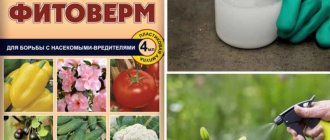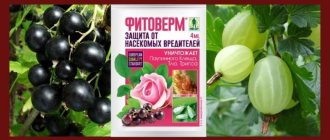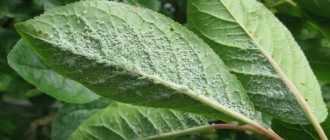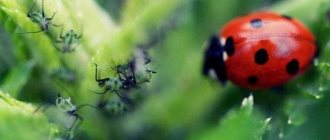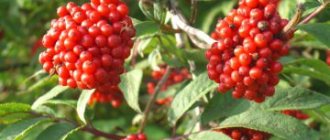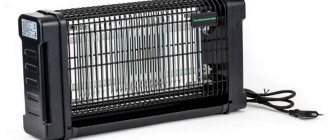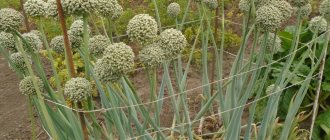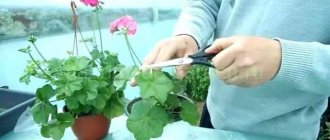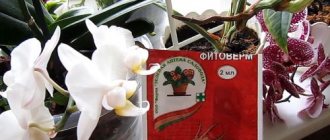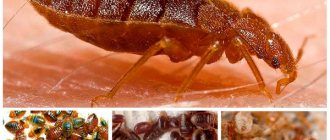What is urea?
The substance is small, white, odorless granules. This is a nitrogen fertilizer and is produced by synthesis. Unlike other fertilizers, for example, saltpeter, urea does not cause burns on the plant mass, is safe for plants, promotes their good growth and improved productivity. Urea contains nitrogen, it makes up about 50% of the substance.
Urea dissolves well and quickly, decomposes in the soil for a long time, and is suitable for use in any type of soil, including light and slightly acidic. Another advantage of using urea for gardening is its low price. That is why most summer residents prefer this fertilizer.
When working with urea, keep the following in mind:
- Urea belongs to organic compounds, but is considered a mineral nitrogen-containing fertilizer.
- The effect of urea begins immediately and has a long period.
- Urea for gardening as a fertilizer is applied directly to the soil, since it has the ability to weather.
- It is used in any soil, including in protected conditions (in greenhouses and hotbeds).
- Shows good effectiveness on waterlogged soils.
- In soils with high biological activity, urea loses less nitrogen, which cannot be said about alkaline and neutral soils.
- Once in the soil, urea is converted into ammonium carbonate (ammonium carbonate).
- It is the most effective and safe nitrogenous fertilizer for garden plants in the summer - it does not burn the foliage even if the dosage is incorrect.
- Another very useful property of urea is that it slows down the growing season - trees begin to flower later, and this helps to avoid the death of ovaries from spring frosts. This is especially effective for early ripening varieties of peaches, plums, and apricots.
- During the period when buds are forming on the trees, treatment with urea solves the problem with many pests and various diseases.
- Spring treatment of the garden with urea helps protect trees from frost.
- Urea is useless when dealing with old stumps; it is not capable of destroying them completely, but will only contribute to rotting.
- Under no circumstances mix urea with other fertilizers and minerals - chalk, simple superphosphates, lime.
Why is the treatment carried out?
Treatment of the garden with urea in the fall is carried out for the following purposes:
- beneficial effects on different types of plant crops;
- increasing productivity;
- increasing the amount of protein in cereals;
- prevention of garden diseases;
- prevention and elimination of pests - aphids, copperheads, weevils and flower beetles;
- strengthens the immune system and increases resistance to temperature changes and precipitation;
- helps the plant to acclimatize faster after picking or transplanting.
Many gardeners recommend using urea for weakened and depressed plants: this promotes their rapid recovery, the result is noticeable within a few days.
On a note! Urea is suitable for almost any type of plant, but it is not recommended to use it during budding or flowering. This is due to the fact that fertilizing can inhibit further growth of the plant and reduce the amount of future harvest.
The use of urea promotes the formation of lush greenery, good flowering, healthy appearance and large flowers. It is recommended to use it when the plant looks depressed, is out of size, crumbles or turns yellow. It is recommended to treat trees or flowers in the fall after a cold or long winter.
Signs of Nitrogen Deficiency
A lack of nitrogen-containing compounds can be noticed during the growing season of vegetation. This will make it possible to adjust the macronutrient content in the autumn, which will ensure its sufficient quantity before the new season.
Nitrogen is responsible for increasing the green mass of the crop, the number of young shoots and stepsons. Additionally, it takes an active part in the processes of photosynthesis, which are activated at the beginning of plant growth and development.
Among the main signs of nitrogen deficiency in the soil
the following are distinguished:
- the culture develops slowly and produces few shoots;
- leaf plates acquire an unusual narrow, elongated shape and become smaller;
- the color of the green mass becomes lighter, often the leaves fall off prematurely;
- young shoots are thin and weak, have few leaves, weakly branch;
- The number of buds formed on the plant is significantly reduced, and unripe fruits fall off en masse.
An excess of nitrogen
is more dangerous
than its deficiency and is characterized by the following symptoms:
- in the early stages of growth, the plant’s development is greatly inhibited;
- adult crops actively increase green mass without forming a sufficient number of ovaries;
- the foliage takes on a rich dark green hue;
- the period of fruit ripening is postponed to a later date.
Pros and cons of the method
Urea today is one of the most popular fertilizers among gardeners and gardeners. The advantages of its use include several characteristic features:
- a solution prepared on its basis tends to be quickly absorbed by plant crops;
- feeding it is safe, no burns appear on the leaf blades of the plants;
- after application, within 48 hours, the amount of nitrogen in plants increases several times, accordingly, the fertilizer begins to have a beneficial effect on its development;
- Spring or autumn spraying reduces the likelihood of flowers falling off, which usually occurs after frost.
A solution prepared on the basis of urea can be called universal. It not only has a beneficial effect on the development of various plants, but also helps fight pests and pathogens. As for the disadvantages of its use, these include the following points:
- if the concentration in the composition is even slightly exceeded, the seeds will not sprout;
- if the solution is prepared incorrectly or introduced into the soil, ammonia begins to be released in a gaseous state, it can cause burns on young shoots, which will lead to their death;
- urea cannot be used simultaneously with other types of fertilizers.
The use of a fertilizer such as urea has many positive and negative aspects. In order for it to have an exceptionally beneficial effect on the plant, it must be used correctly.
Urea and its features
Urea or carbamide is a mineral fertilizer that is synthesized from inorganic substances. As a result of the transformation of protein compounds, scientists obtained a concentrated mineral composition, which includes more than 45% of the active substance - nitrogen.
The form of release of the nutritional composition is white or slightly pink granules, which dissolve well in water and are quickly absorbed by the soil. It is important to take into account that the higher the ambient temperature, the more actively the working microelement is absorbed.
Particular attention should be paid to the role of nitrogen in the autumn. This substance promotes the active growth of green mass of crops. Therefore, experienced farmers recommend carefully monitoring its amount in applied fertilizers.
Active vegetation before the onset of winter cold can significantly weaken the plant - young shoots will not have time to become lignified by the time the first frost occurs. Restoring the culture again will require a lot of time and effort. Therefore, untimely application of nitrogen-containing substances is especially dangerous for perennials - garden trees and berry bushes.
Duration of procedures
There is no exact time when a plant can be treated with urea. These deadlines are different in each region. Experienced gardeners and gardeners recommend doing this twice a year - in spring and autumn. You can apply the fertilizer solution for the first time immediately after the trees begin to bloom. The second time is when the leaves fall.
It is a mistake to treat with a urea solution immediately after thawing the soil: such plant care is ineffective. If for some reason this was not possible in the spring, you should definitely fertilize in the fall.
Interaction of urea with other fertilizers
This fertilizer, like other drugs, is compatible with some drugs, but not with others, so they cannot be applied to the soil together.
Urea does not combine with the following substances:
- wood ash;
- superphosphate;
- plaster;
- chalk;
- calcium nitrate;
- dolomite flour.
You can combine the application of urea with the following fertilizers:
- manure;
- potassium chloride;
- sodium nitrate;
- potassium sulfate.
Nitrogen activates the growth of vegetative mass, so the drug is not applied after the start of flowering of crops and in the fall under perennials, so as not to provoke the growth of shoots and foliage.
Therefore, urea fertilizer is applied only in the spring.
And in the fall you can feed the plants with superphosphate.
INTERESTING!
• Article: Feeding pepper seedlings at home
Features of autumn processing
Typically, this procedure is carried out before the leaves fall. For most regions, the optimal period is the second half of October - early November. It makes no sense to carry out earlier processing for two reasons:
- burns may appear on the leaves;
- The frost resistance of the plant crop will noticeably decrease.
It is also worth paying attention to the condition of the garden land. If there are signs of disease on it or there are pests, it is imperative to treat the trunks and fallen leaves.
On a note! If it is necessary to spray fruit trees with urea in the fall, it is important to evenly distribute the solution over the entire surface of the crown, and also over the area around the trunk. Thanks to this care, the tree will better withstand the cold and will be protected from infectious diseases.
from preparation to spraying, instructions
Increased humidity, which occurs with the onset of cold weather, is the optimal condition for the emergence and spread of infectious diseases of garden trees.
To prevent this undesirable phenomenon, it is necessary to treat the garden with urea in the fall. We also have instructions for spring processing - see here.
The procedure will protect the trees in the winter cold and guarantee abundant flowering in the spring.
What is urea?
Urea (urea) is a chemical compound presented in the form of a scattering of solid granular crystals, white and odorless.
It is a product of the synthesis of carbon dioxide and ammonia according to Bazarov’s formula. At production plants it is produced in parallel with other ammonia-based substances.
Use as fertilizer
The nitrogen contained in urea is necessary for plants to fully develop. If there is a lack of a chemical element, garden trees bear fruit worse and lose their presentable appearance.
In addition, urea protects against infectious and putrefactive diseases, spotting, and insect pests.
How to prepare urea for spraying
Required Components:
- urea;
- water;
- sprayer;
- ladder.
To treat the garden in the fall, urea (500-700 g) is diluted in 10 liters of water , after which the solution is filtered through cheesecloth several times. At the same time, not only trees and shrubs are processed, but also fallen leaves.
Features of garden spraying in autumn
The best time is late autumn . It is advisable to start processing when the leaf fall period is nearing its end.
Otherwise, a highly concentrated nitrogen solution can lead to premature leaf loss and the formation of burns, and therefore make trees more vulnerable to frost.
Spraying is carried out in calm weather. Treating the garden with urea in the fall will have a greater effect if carried out on a calm, sunny day.
The absence of wind will also protect the worker and nearby people and animals from unwanted amounts of pesticides contained in the fertilizer.
Preliminary work
Before spraying, it is necessary to pay attention to trees that have bark diseases .
To do this, remove the affected areas, giving urea direct access to problem areas and areas where winter pests accumulate.
The leaves are left even if there are various kinds of diseases on them and are also sprayed. After winter, foliage treated with ammonia solution will work perfectly as compost for trees.
How to process
Fine spraying gives maximum effect . The crown, trunk, and fallen leaves can be treated with urea.
Safety precautions
You should always remember about your health and, before treating the garden with urea in the fall, take care of the appropriate equipment: gauze bandage or respiratory mask, eye protection glasses, rubber gloves.
Urea is a universal fertilizer for various types of vegetation.
In the case of autumn garden cultivation, a urea solution will prevent the formation of infectious diseases, protect trees from pests, and promote abundant flowering and a rich harvest.
vreditel.net
Preparation of urea for processing
The first thing to do is to correctly calculate the proportions:
- for any mature trees, including fruit trees - plums, apple trees, pears - you will need 500-700 g of fertilizer;
- for young trees 100-250 g is enough;
- bushes and shrubs – gooseberries, raspberries, currants – 30-40 g;
- cucumbers or peas – 5-8 g;
- zucchini or squash – 10-15 g;
- tomatoes or peppers – 15-20 g;
- potatoes – 20-25 g.
On average, 5 to 20 g of dry nitrogen fertilizer per 1 square meter is sufficient for vegetable crops. meter. The required amount of nitrogen fertilizer must be diluted in 10 liters (bucket) of water and mixed until the granules are completely dissolved. This solution is suitable for preparing a garden in the fall; it is used to spray dry branches or water the tree trunk before loosening.
Aliot
Unlike previous drugs, Aliot is characterized by a wider spectrum of action and has not only insecticidal properties. This product is also an acaricide, a substance that is used to combat ticks. If you encounter an invasion of ticks during the growing season, then it is better to use Aliot to treat trees in the fall. In addition to ticks, it is effective in combating a whole range of gnawing and sucking insects that harm vegetable, fruit and flower crops. Among them are such garden pests as raspberry beetles, apple scale insects, copperheads, codling moths, leaf rollers, sawflies, etc.
After spraying, Aliot penetrates all parts of the tree and attacks pests from three sides at once:
- it affects insects through direct contact with their outer shells;
- causes irreparable harm if it enters the intestinal tract;
- It also has a detrimental effect when inhaling the vapors of the drug.
To treat trees, Aliot is diluted as follows: first dilute 10 ml of the drug in 1 liter of water, and then increase the volume to 10 liters. The norm is up to 3 liters per adult tree, up to 1.5 liters per grape bush.
The prepared solution should be used immediately after preparation, because it cannot be stored.
Soil application technique
In order to add urea to the soil in the garden in the fall, you need to:
- Choose the right time. Fertilizer can be applied to the soil strictly in the morning or evening. It is better to do this in dry and windless weather.
- Loosen the soil.
- Apply the solution at the root of a tree or bush.
- Loosen the soil around the trunk again.
To apply urea for garden treatment in the fall, the recommended temperature is from +4 to +6°C. If it rains after applying the fertilizer, the procedure must be repeated, otherwise it will be ineffective. You can also apply fertilizer in dry form. But in this case, the granules should be covered with a layer of soil, since ammonia tends to evaporate in the open air.
Urea. Normal blood urea levels in women and men
Determining the amount of urea in the blood is a routine biochemical screening test.
Patient preparation:
No special preparation is required for this analysis - blood (a few milliliters) can be donated at any time of the day.
Normal levels of urea in blood serum
*- urease method (reaction with diacetyl monooxime)
** - it is generally accepted that the conditional norm of urea in the blood in women coincides with the norm of urea in the blood for men.
Interpretation of the results of a blood test for urea
| Serum urea level | Pathology |
| No more than 10 mmol/l (creatinine is normal) | Extrarenal pathology |
| 10 - 15.9 mmol/l | Mild kidney damage |
| 16 - 27 mmol/l | Moderate renal failure |
| 28 - 35 mmol/l or more | Severe renal failure |
| over 50 mmol/l | Severe renal failure with a poor prognosis. |
- An increase in urea in the blood in pregnant women may be a sign of preeclampsia nephropathy.
Why is blood urea elevated in older people?
Aging of the body often leads to a decrease in kidney function. An age-related decrease in GFR causes a moderate increase in urea in the blood of elderly patients.
What affects the biochemical blood test for urea?
| Factor | Urea in the blood |
| Nephrotoxic substances/drugs: - Heavy metals. — Aristolochic acid (dietary supplement). — Antibiotics: penicillins, aminoglycosides, amphotericin B, cephalosporins of the 1st generation (gentamicin, amikacin, etc.). - Sulfonamides. — Antitumor drugs (platinum drugs, methotrexate, etc.) — NSAIDs. — Lithium preparations, fluorine. — Thiazide diuretics, furosemide. - Cimetidine. - Allopurinol. - Acyclovir. - Vasodilators, anti-pressure medications. |
Pest Elimination
Experienced gardeners know firsthand how dangerous pests can be for the garden. Because of them, the number of fruits decreases, diseases appear that can lead to the death of the plant. To avoid these unpleasant moments, you can treat the garden with urea.
Aphid
Urea today is one of the most effective remedies against aphids. To fight, you need to make a special solution in the proportion of 500-700 g of active substance per 10 liters of water. 2.5 liters of this substance is enough to treat an area of 1 m².
For prevention, it is recommended to treat the garden with iron sulfate and urea in the fall. To do this, dilute 500-700 g of urea in water, wait until the granules dissolve, and then add 50 g of vitriol. You can spray the crown of a tree, its trunk and fallen leaves with this solution against pests.
Rules for autumn spraying of the garden with nitrogen-containing fertilizer
The best time is late autumn. Urea, as a highly concentrated nitrogen-containing fertilizer, should be used in late autumn for the purpose of prevention and destruction of pests, i.e., when leaf fall is in the second stage or has already ended. The approximate month for this stage is the beginning or end of November, depending on the climatic latitude.
Earlier treatment of garden trees with urea in the fall can lead to tree burns and premature leaf loss, which will affect their vulnerability to frost and low supply of nutrients.
Dry, windless weather is a priority. A process such as spraying garden trees with nitrogen-containing urea requires both the absence of wind and dry weather. Firstly, this will provide maximum effect that will not be blown away by the wind or washed away by precipitation. Secondly, it is much safer for your health and, possibly, your yard animals, because the fertilizer contains pesticides.
Preparing trees for processing. This applies mainly to trees older than 6-10 years, and which have obvious bark diseases. Before processing them, you should remove diseased and affected areas of the bark using your hands or a metal brush or spatula. This will provide direct access to the affected area when spraying, as well as to the accumulation of insects.
As for foliage, even those affected by diseases, it is not recommended to remove it as unnecessary and is also subjected to treatment. In the spring, the treated foliage will become an excellent fertilizer, a kind of compost for trees.
Preparation of solution for spraying. The difference between urea, as a supplement and as a medicinal product, is in the composition of its solution. So, to destroy diseases and pests, prepare a very concentrated solution per 10 liters of water with at least 500 g of fertilizer, and preferably 500-700 g.
Scale of wood processing. The entire crown of the tree should be treated with urea in the fall, i.e. use fine spraying, which will eliminate existing problems as much as possible and prevent possible diseases.
It is also recommended to spray the tree trunk, especially if it is affected by diseases. It is also important to treat the already fallen leaves of the tree, on which infections and parasites can also live, and the soil adjacent to the tree.
Safety precautions. Take care of your health and use all the necessary protection for working with chemical fertilizers: a respiratory mask or thick gauze bandage, rubber gloves, safety glasses, etc. Wash your hands and face after finishing work, and also put your work clothes and shoes in the wash.
ACTUAL NEWS
Site articles on the topic
- Optimal planting dates for different types of fruit trees in dachas in the Moscow region in 2022
- Optimal planting dates for different types of fruit trees in dachas in the Moscow region in 2022
- Optimal planting dates for different types of fruit trees in dachas in the Moscow region in 2023
- Optimal planting dates for different types of fruit trees in dachas in the Moscow region in 2024
- Preparing grapes for winter: cutting rules
You may also find the following materials useful:
- Save the harvest: fighting rodents in the country
- Spraying trees against codling moths and leaf beetles
- Step-by-step spring work in the garden
- How to prune raspberries correctly to have a high yield
- Spring garden care for rodent damage
Safety precautions
Urea is a highly concentrated chemical, so it is important to follow safety precautions when working with it:
- plants can only be sprayed using a special spray bottle;
- when working with fertilizer, you need to use protective gloves, goggles and a respirator;
- for processing, be sure to choose a calm and dry day;
- After spraying or applying fertilizer to the soil, you need to thoroughly wash your face and hands, and wash the clothes in which the treatment was carried out.
Neglecting safety precautions can lead to burns on the skin or mucous membrane, and poisoning can also occur.
Urea is one of the most effective and safe fertilizers suitable for garden treatment. It is inexpensive and easy to use. If used correctly, you can enhance plant growth, improve productivity, increase disease resistance, and also get rid of many diseases or pests. It is important to follow the dosage and safety measures.
Treating the garden with urea in the fall, spraying trees, using it in the garden
Full care of garden plants consists not only of grafting and pruning branches, applying fertilizers and timely harvesting. Regular spraying of shrubs and trees with special preparations is of great importance. Urea is often used for these purposes, which protects the garden from pests and is also a useful organic additive.
Use of urea in autumn
Urea or urea is a product of the synthesis of ammonia and carbon dioxide. It is produced in the form of small granular solid white crystals. The nitrogen contained in this fertilizer is necessary for the normal development and growth of plants. A deficiency of this chemical element leads to a deterioration in the appearance of trees and a decrease in yield.
Autumn weather is characterized by increased humidity and decreased temperatures. It is these climatic conditions that are favorable for the development of infections and various diseases of fruit trees. By treating with urea, such negative effects can be avoided.
Apple trees, cherries, pears, apricots and sweet cherries need spraying not only if they are clearly infected with parasites, but also for preventive purposes. Such procedures provide the trees with strength, health, intense flowering and a high probability of fruit set.
Treatment of plants prevents the development of the following diseases:
- scab;
- putrefactive processes;
- spotting;
- reproduction of parasites;
- fungal infections.
Urea effectively fights the listed pathologies, improves the condition of plants, and increases productivity.
Deadlines for depositing
The ideal time for processing is considered to be late autumn. It is recommended to start it when there are practically no leaves left on the trees. Otherwise, the concentrated composition can cause burns and premature leaf fall. As a result, the tree becomes vulnerable to frost damage.
Experienced gardeners treat the garden with urea in late October - early November. All leaves from trees and bushes are carefully collected and burned. This helps to destroy all pests that are preparing for winter. After this, dead fragments of bark and lichens are removed. Covering the trunks with a layer of whitewash disinfects the surfaces and protects even from extreme cold.
Treatment is carried out only in dry weather in the complete absence of wind. If it rains on the day the procedure was performed, all manipulations will have to be repeated.
Preparation of the drug
To work you need urea, water, a ladder and a garden sprayer. For 10 liters of water you will need at least 500 g of urea. The mixture is thoroughly mixed and then filtered through cheesecloth several times.
A mixture of urea and copper sulfate will be especially effective in the fight against insects parasitizing in the bark. To prepare, you will need 700 g of urea and 50 g of copper sulfate, which are diluted in a bucket of water (10 l). This composition performs 2 functions at once: destroying pests and replenishing the soil.
Attention should also be paid to garden trees, especially if they already have bark diseases. The affected fragments are carefully removed so that the urea penetrates more actively into the areas where the parasites live. The foliage does not break off, even if it has pathogenic signs. After wintering, leaves sprayed with urea solution will become safe compost for plants.
Before processing, there are several important recommendations to consider:
- Do not spray the garden if the air temperature drops below +5°C;
- dead areas of bark are removed with a special metal brush, dried and rotten branches are cut off;
- cracks in the trunk are inspected, and any insects found are destroyed.
The soil under trees and shrubs must be dug up and loosened. Not only plants, but also fallen leaves are subject to treatment.
Spraying trees
Spraying should cover the trunks and crowns of plants as much as possible. If they already show signs of disease, special attention is paid to the affected areas. Some gardeners rake and burn leaves. But you don’t have to remove it, but treat it thoroughly with urea. The drug destroys pests and infectious agents, promotes rapid decomposition of leaves. As a result, they turn into an excellent natural fertilizer for the garden.
When performing the procedure, it is important to adhere to several rules:
- Spraying is carried out only after preliminary preparation has been completed: digging up the soil, removing affected branches, whitewashing.
- A dry, sunny day with no wind is suitable for processing. If the weather is hot, you should start work early in the morning or after sunset.
- The preparation and use of the solution is carried out only in protective gloves, glasses and clothing.
- The most effective spraying is done using a special sprayer. This device allows you to process even the tallest plants.
- When working, you should not spare the composition, since it will not cause any harm to trees and shrubs.
- If precipitation occurs immediately after treatment, the procedure is repeated. Otherwise, the desired result will not be achieved.
Branches, trunks and soil are treated with urea. It is important to adhere to the recommended dosage. A high concentration of the solution burns the plants and provokes early leaf fall. As a result, trees will receive fewer nutrients and will be more susceptible to low temperatures.
Application to the soil
Urea is also suitable for caring for various ornamental and fruit trees and shrubs. This universal product is applied to the soil to feed and protect plants from parasites. Currently, urea is considered one of the most popular fertilizers. Urea is safe and highly effective, which explains the high demand from consumers. The cost of fertilizing is an order of magnitude higher compared to nitrogen-containing analogues. The fact is that urea is not a natural compound. It is extracted through a synthesis process from carbon dioxide and ammonia. Experts are confident that the price fully justifies the quality of the fertilizer.
Nitrogen starvation in plants is manifested by several pronounced signs:
- slow growth of seedlings;
- curling and yellowing of leaves;
- weak flowering, lack of ovaries;
- low yield, early fruit shedding.
Fertilizer is applied in the morning or evening, always on a dry day. If it is raining outside, it is worth rescheduling the work to another time. A solution is often used; for preparation it is necessary to dilute 30–40 g of urea in 10 liters of water.
Dosages for application to soil:
- For potatoes, various varieties of onions, tomatoes, cabbage, and sweet peppers, no more than 20 - 25 g of urea per 1 m² will be required.
- For feeding cucumbers and legumes – 5 – 8 g per m².
- Gooseberry bushes are fertilized with urea diluted in water in proportions of 10 g per bucket of water (10 l).
- For strawberries, blackberries, and garden strawberries, you need to dissolve about 35 g of urea in 10 liters of water. Each plant should have at least 1 liter of ready-made solution.
- Zucchini, squash, eggplant need 10 - 12 g per 1 m².
- Currants will bear more fruit if you water them with urea solution (20 g per bucket of water).
If necessary, fruit trees are fertilized during the fruiting period. Apple trees are watered with a mixture of 230 - 250 g per bucket of water. Plums and cherries are fed with a less concentrated solution: 120 - 150 g of urea per bucket of water. It is not necessary to dilute the fertilizer with water. You can add dry crystals, but then you need to water abundantly.
If garden plants are fertilized with organic substances, the application rates of urea are reduced by 1/3 or 2 times. It all depends on the amount of organic matter.
Safety precautions
The work is carried out using a special spray gun, which thoroughly sprays the necessary substances. To protect your health from the negative effects of pesticides, you should take the following precautions:
- prepare and spray the solution only while wearing protective gloves, goggles and a respirator;
- all work is carried out only on a windless, dry day;
- After completing the procedures, you must thoroughly wash your hands and face, and immediately wash all work clothes.
Safety regulations are mandatory to follow.
Conclusion
Treating the garden with urea is not a difficult task, but it is effective. Proper implementation of the procedure will protect trees from many diseases and pests. Due to its nitrogen content, urea activates plant growth, productivity and resistance to negative factors.
proudobreniya.ru
Instructions for use of urea
- In order for the use of urea to be effective, you must remember the simple rules for using this fertilizer:
- Foliar application for feeding plants is optimal when they form green mass; urea helps to develop the vegetative part. Therefore, it is not recommended to apply it during the period when the plant is setting buds - this often leads to a decrease in yield.
- Fertilizing with urea in the autumn is not always effective. At this time, microorganisms in the soil are actively decomposing, and the ammonium released by the fertilizer will undergo rapid destruction. By the beginning of spring, the nitrogen will partially drop and end up in the deep layers of the soil, where plants can no longer reach it. In autumn, the use of urea is recommended on cool and dry days. Plants need to be fertilized if the site has sandy or sandy loam soil. Perennial plants and winter crops absolutely do not need autumn fertilizing with urea.
- You need to remember about the evaporation of ammonia exposed to the open air, and embed urea into the soil at a depth of 3 to 4 cm. You can also practice applying it before planting or sowing. You can leave it directly in the holes and grooves intended for seeds. But be sure to provide a layer of soil between the sowing/planting material and the fertilizer so that freshly sown seeds do not come into contact with it. To protect seeds and sprouts from exposure to harmful ammonia gas, you can add urea 1-2 weeks before planting.
- The only type of fertilizer recommended for use in conjunction with urea is potash. They will also help the sprouts cope with the effects of harmful ammonia. In this case, the efficiency will not decrease. It is permissible to mix urea with another substance if it is completely dry, and immediately before use, since urea will make the resulting mixture more hygroscopic.
- Remember a number of fertilizers that are absolutely not suitable for “mixing” with urea: lime, chalk, dolomite, simple superphosphate.
- Unused fertilizer granules must be placed in a dry place and protected from moisture - urea has the property of instantly absorbing any moisture.
Urea is an easy-to-use fertilizer that brings serious benefits. It is important to use it in a timely manner and in the right quantities, avoiding overdose. If urea is used correctly, the plants will not only look great, but will also bring a rich harvest.
OUR ASSORTMENT
SoilSoilDrainageLiquid fertilizersMineral fertilizersOrganic fertilizersOrganic mineral fertilizers
Urea - application of fertilizer in spring
In the spring, the use of urea to prepare beds in the garden and in greenhouse conditions is necessary, especially on depleted soils. When adding dry granules to the soil, they are usually buried into the ground to a depth of at least 8-10 cm. It is better to apply the drug into moist soil for easier digestibility.
Spraying with urea in spring - video
Also, to improve soil fertility and feed planted plants in the spring, a urea solution is prepared, which is used to water the crops at the roots. You can also use a urea solution to treat perennials against insect pests - the principle is described above.
Urea fertilizer - reviews of use for plants and flowers
On forums, gardeners and vegetable growers leave a large number of reviews about the use of urea in the garden and vegetable beds. Some of them are given below.
Natalya, 45 years old, Volgograd:
“I use the Urea preparation for spraying garden and vegetable plants, since such foliar feeding improves the formation of ovaries and ultimately helps to increase the yield of garden and vegetable crops.”
Miroslava, 39 years old, Yaroslavl region:
“I always treat my indoor plants with urea in the spring. This product activates the growth of vegetative mass and promotes abundant flowering of my green “pets.”
Tatyana, 40 years old, Far East:
“I always feed the vegetables in the garden with urea at the beginning of their growth. This fertilizer allows plants to grow more actively, improves the growth process of root crops and the formation of ovaries. Urea is a time-tested remedy, many people trust it.”
Nikolay, 49 years old, Cheboksary:
“I grow a lot of things in the garden and I have to constantly monitor the condition of the plants and carry out preventive work. I always treat fruit trees and shrubs in the spring before the buds open with a urea solution against pests. The main thing is to observe the dosage of the drug when preparing an aqueous solution, since too high a concentration of the drug can harm fruit bushes and trees.”
Svetlana, 50 years old, Ryazan:
“In my garden, in the spring, I always add urea to the tree trunks of fruit trees - this fertilizer activates the growth of new shoots and foliage, promotes the formation of ovaries and, as a result, improves the yield of trees. I pour urea into trenches, which I dig around the tree trunks, cover with soil on top and water. I think there is no better product than urea for spring feeding of apple trees.”
Urea is a nitrogen-containing fertilizer
, which is characterized by ease of use, ease of preparation of an aqueous solution and a high nitrogen content in its composition.
Therefore, urea is very popular among vegetable growers and gardeners, who use it as a fertilizer and as an effective remedy against pests.
And amateur flower growers use the drug to feed indoor plants and flowers. Recently searched:
How to store fertilizer
The instructions for use of the drug state that urea can be stored for no more than 6 months, but if the appropriate conditions are created, this substance can be stored for an unlimited time.
If the fertilizer bag has not been completely used, it should be sealed tightly. Or the drug is poured into a plastic container with a tight-fitting lid. The package with urea should be stored in a dry place, since the granules of the drug are hygroscopic and quickly absorb moisture. At the same time, the quality of urea sharply deteriorates; such a substance will be useless in the future.
